Exotic military units of France. Tyiraliers
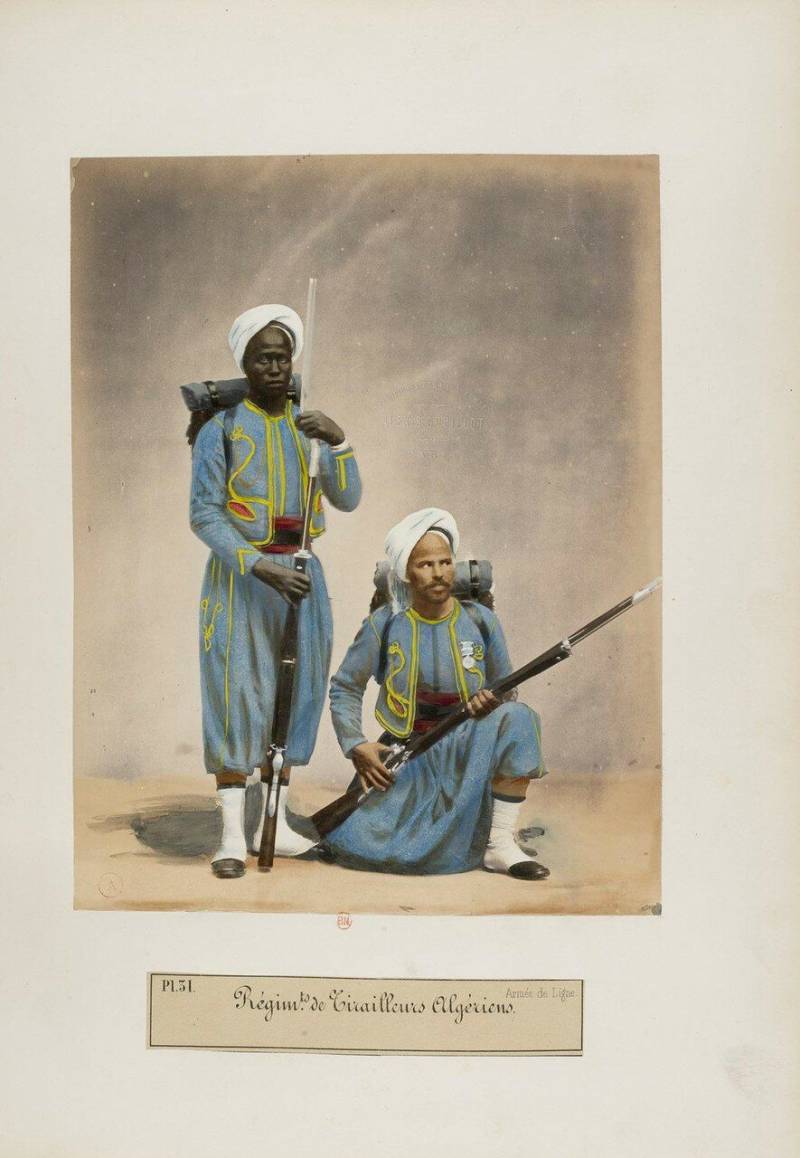
Tyrael of times of Napoleon III. Hand-painted photograph from Album photographique des uniformes de l'armee francaise Paris, 1866
As we recall from the article “Zouaves. New and unusual military units of France ", after the conquest of Algeria (1830), and then Tunisia and Morocco, the French decided to use the young men of these countries to control the newfound territories. Attempts to make the new combat formations mixed (in which Arabs and Berbers would serve alongside the French) were unsuccessful, and therefore already in 1841 the Zouave battalions became completely French, their "native" colleagues were transferred to other infantry units.
"Algerian tyrallers"
Now the former "native" zuavs began to be called Algerian arrows, but they are better known as Tirailleur. This word has no relation to Tyrol: it originates from the French verb tirer - “pull” (bow string), that is, originally meant “archer”, then “shooter”.
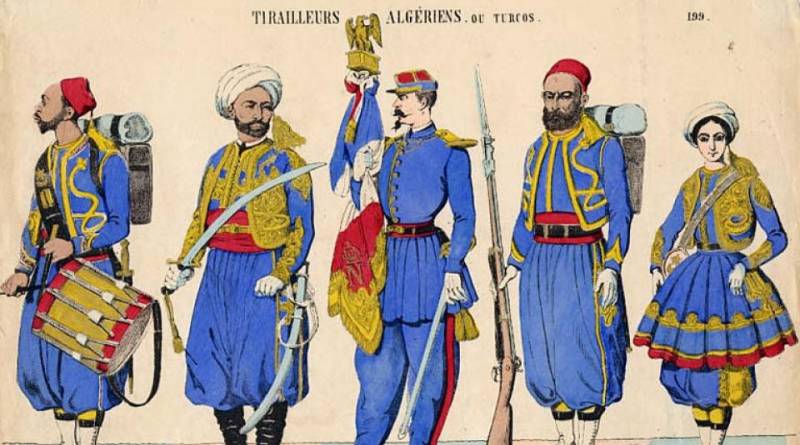
Algerian tyrallers. Please note that in their ranks there is a marketeer - Vivandiere. These women were described in the article.
“Zouaves. New and unusual military units of France "
Tyraeli then called light infantry in France, operating mainly in the loose formation. And after the Crimean War (in which they also took part), the tyrallers got the nickname “Turks” (“Turks”) - because both the Allies and the Russians often mistook them for Turks. Then in the Crimea there were three battalions of tyrallers: from Algeria, Oran and Constantine, brought together into one temporary regiment, numbering 73 officers and 2025 lower ranks.
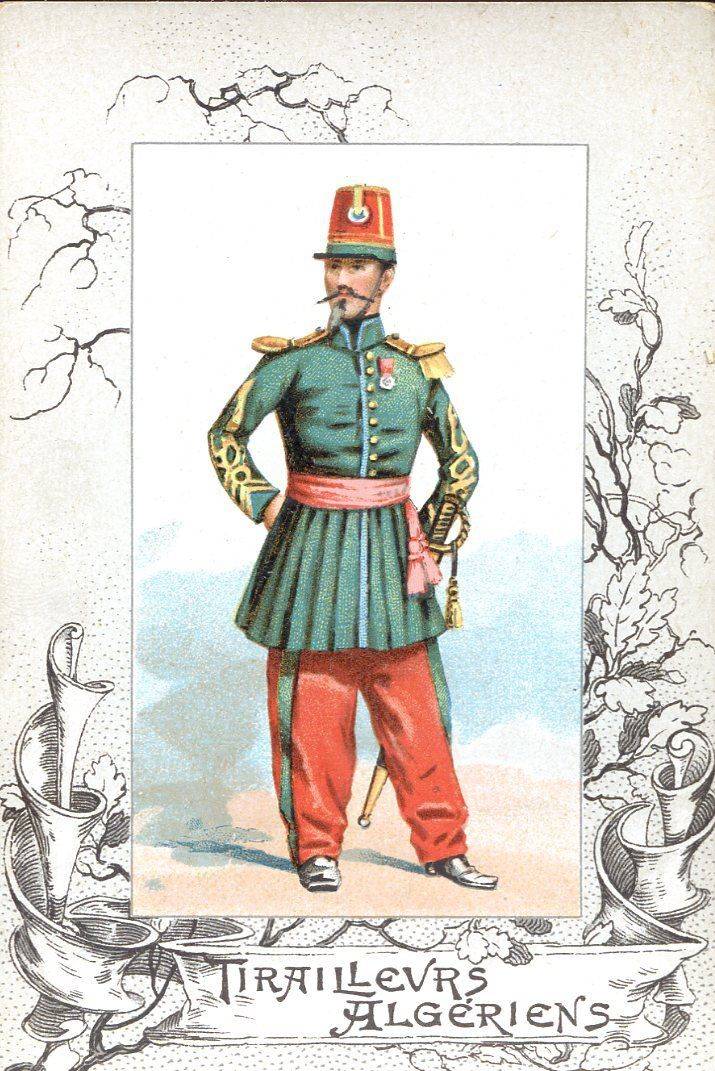
Algerian Rifle Officer, 1843-1852
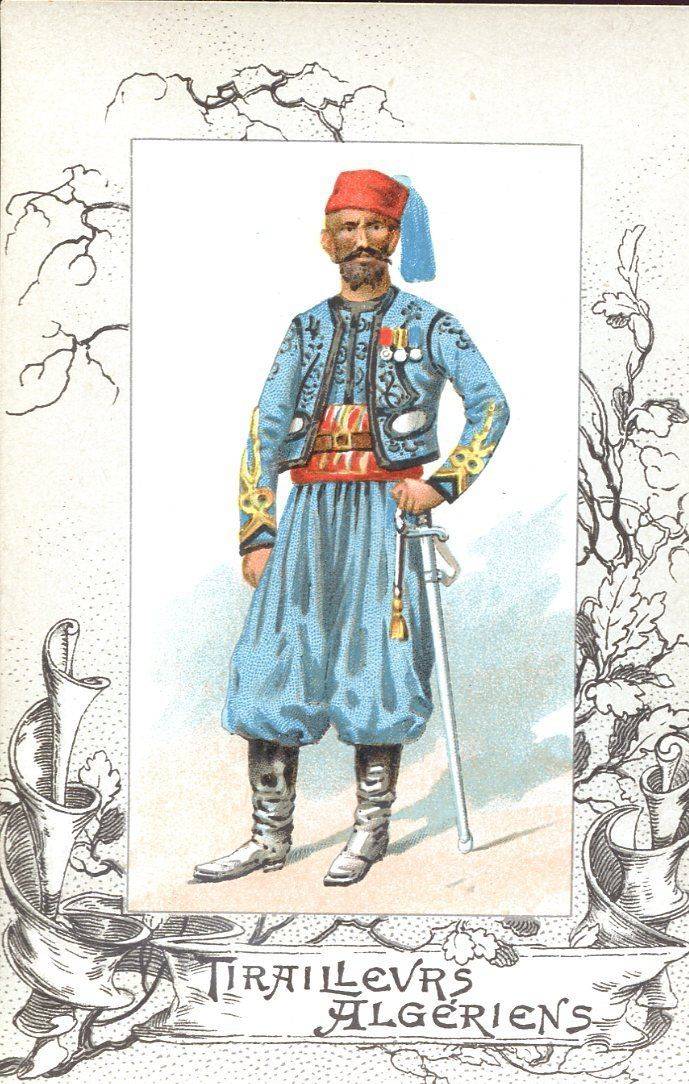
Private Algerian shooters, 1853
The fighting path of the Maghreb tyrallers, in general, repeats the path of the Zouaves (in contrast to the shooters recruited in Indochina and in "black" Africa), so we will not repeat ourselves and lose time on listing the military campaigns in which they took part.
The battalions of zouaves and Maghreb tyrallers sometimes were part of one large military unit, but their troops never mixed with each other. An example is the famous Moroccan division, which played a large role in the First Battle of the Marne (September 1914) and in the battle of Artois (May 1915): it consisted of battalions of the Foreign Legion, Moroccan tyrallers and Zouaves.
The uniforms of tyiraliers resembled the form of zouaves, but were lighter in color, had a yellow edging and a yellow ornament. The sash was red, like the fez (sheshiya), the color of the brush of which (white, red or yellow) depended on the number of the battalion.
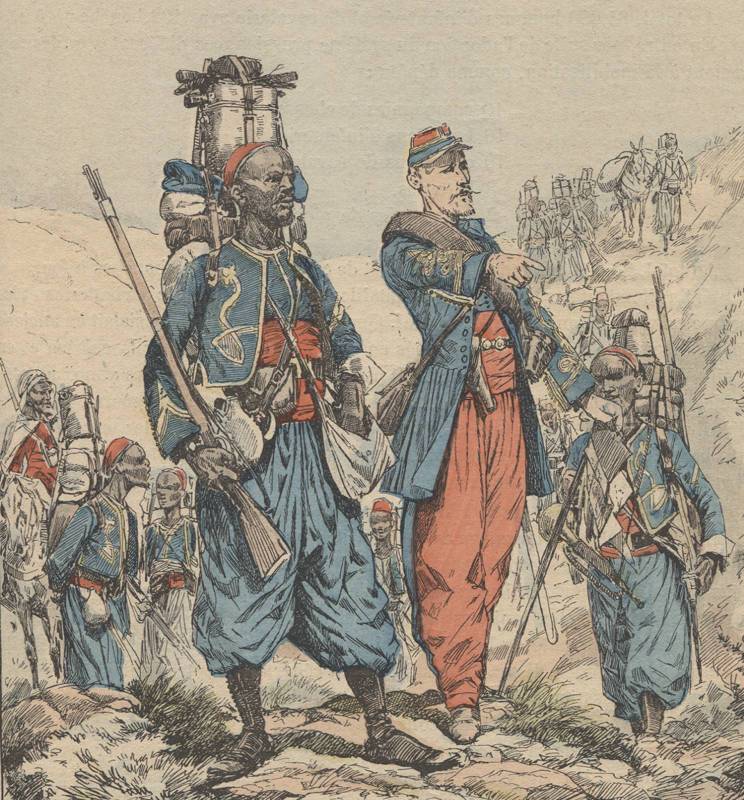
Tirailleurs algeriens durant la guerre de 1870
During World War I, tyrallers got a mustard color.
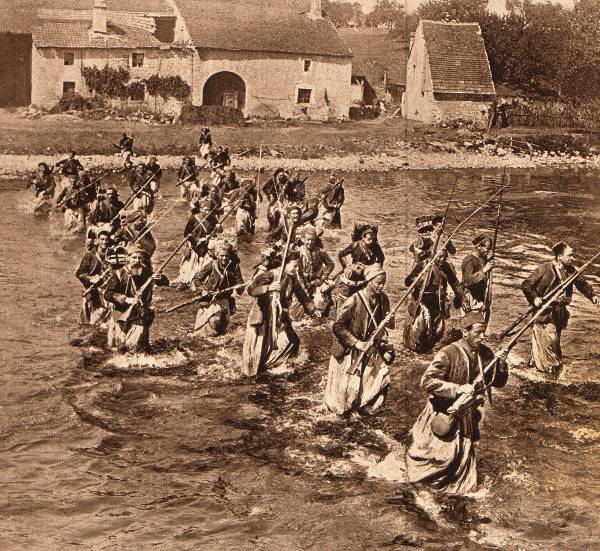
World War I, 1914: Algerian tyrants also have an old-style uniform
It should be noted that the formations of the tyrelers were still not completely Arab-Berber: regardless of successes in the service, the “natives” could only rely on non-commissioned officers. All the officers, part of the sergeants, machine-gun crews, sappers, doctors, telegraphists, clerks in these units were French. It is estimated that there could be from 20 to 30% of the total personnel of ethnic French in the regiments of tyrael.
The French Colonel Clement-Grancourt in his book “La tactique au Levant” wrote about the differences between Algerian and Tunisian tyrants:
Like zouaves, in normal times, units of tyrallers were stationed outside of France, and for the first time they were in the metropolis during the First World War.
In August 1914, 33 Algerians, 000 Moroccans, 9 Tunisians served in the French army. Later only in Morocco, an additional 400 battalions of tyrallers were formed (and the total number of all "colonial soldiers" - from the Maghreb and "black" Africa, during the years of World War I amounted to 7% of the number of the French army). But only 000 privates from among the Maghreb tyrallers then managed to rise to the rank of officer or non-commissioned officer.
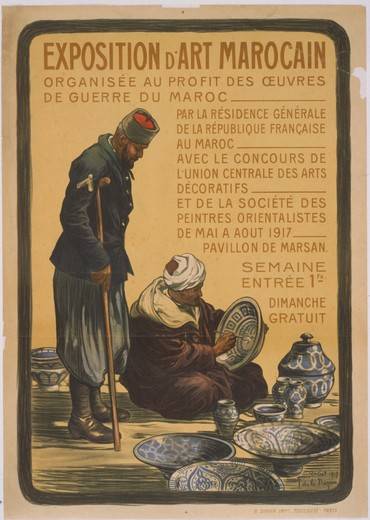
Advertising poster for charity art exhibition in favor of wounded Moroccan soldiers
The tyrallers of North Africa showed themselves very well then during the fighting in the Middle East. Clément-Grancourt mentioned above reports:
Maghreb tyraliers during World War II
After the outbreak of World War II, 123 thousand shooters were transported from Algeria to France. In total, about 200 thousand people from Algeria, Tunisia and Morocco were at the front. For several months of the fleeting campaign of 1940 in France, 5400 North African tyrael were killed, about 65 of them were captured.
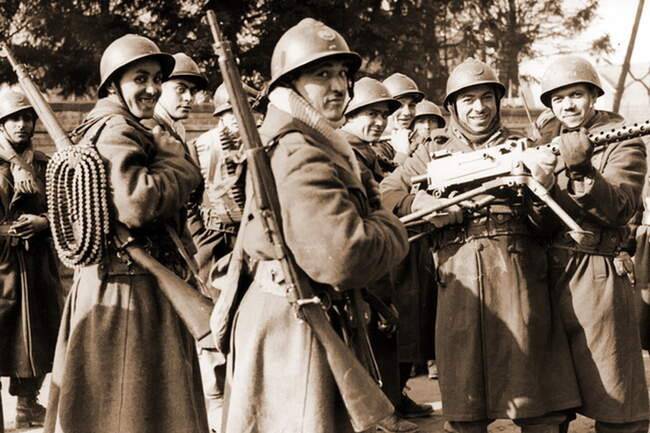
Algerian tyrallers. The Second World War
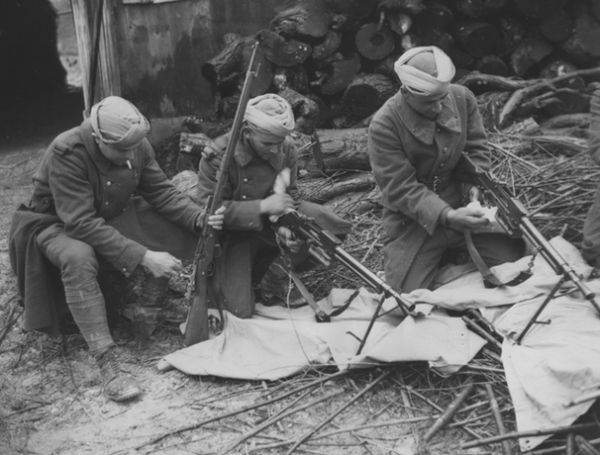
Soldiers of the 3rd Regiment of Moroccan Tyrael, Vosges, March 1940
After the defeat of France, North Africa remained under the control of the Vichy government. From here, Germany received phosphorites, iron ore, non-ferrous metals and food, which created economic difficulties in the country. In addition, it was from Algeria that the army of Rommel was supplied, who fought with the British in Libya (as a result, food prices in this country from 1938 to 1942 increased more than 2 times). However, in November 1942, the Anglo-American forces occupied Morocco and Algeria, and in May 1943 - Tunisia. The tyrallers who came to their side took part in further Allied operations in Africa and in Europe, for the courage shown by servicemen, the 1st Algerian and 1st Moroccan regiments in 1948 were awarded the Order of the Legion of Honor.
The North African tyrallers took part in the First Indochina War and suffered huge losses in the famous battle of Dienbienf, from the defeat in which France was never able to recover.
In 1958, the regiments of Algerian riflemen were simply renamed to rifle regiments, and in 1964, after the declaration of independence of Algeria, they were completely disbanded.
Senegalese arrows
Since 1857, tyraller units began to be recruited in other French colonies: first in Senegal (initiated by Governor Louis Federb), and then in other African countries - in the territory of modern Guinea, Mali, Chad, the Central African Republic, Congo, Burkina Faso, Djibouti . All of them, regardless of the place of recruitment, were called Senegalese tyiraliers - Regiments d´Infanterie Coloniales Mixtes Senégalais.
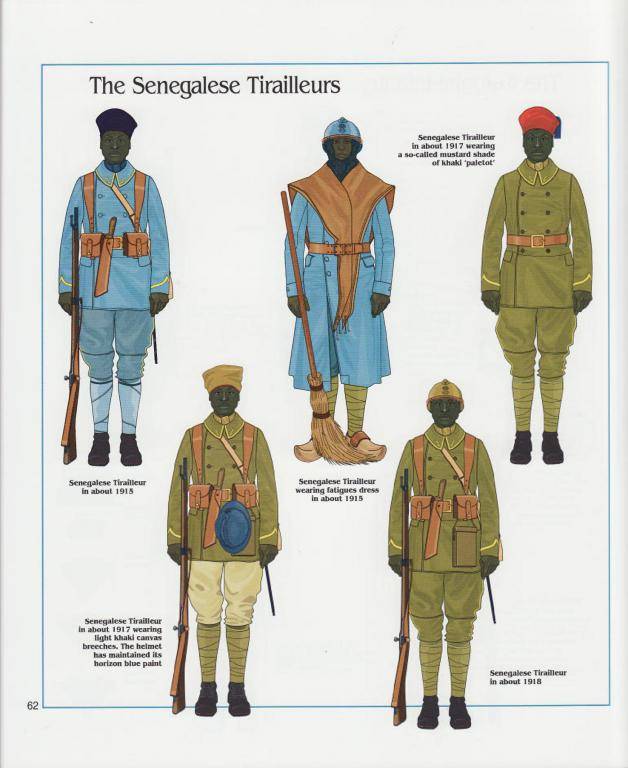
The senegalese tirailleurs
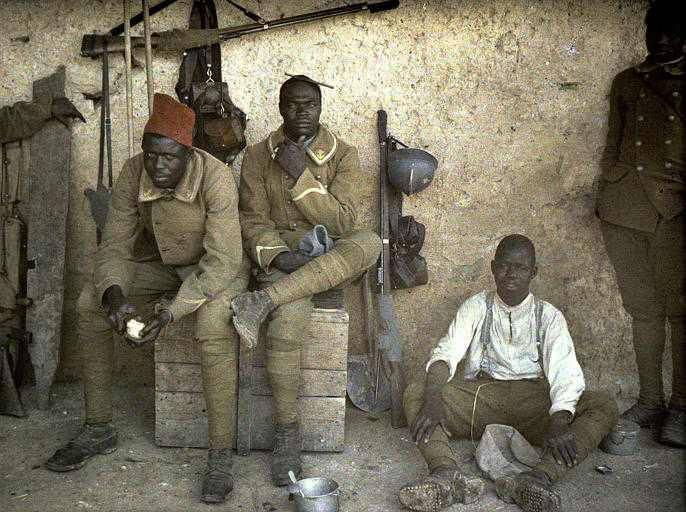
Senegalese tyiraliers
Interestingly, the first "Senegalese" tyrelers were young slaves bought from their former African owners, and later they began to attract "contract soldiers" to these units. The confessional composition of these units was variegated - among them were Muslims and Christians.
These formations fought in Madagascar and Dahomey, in Chad, Congo and South Sudan. And in 1908, two Senegalese battalions were even in Morocco.
The increase in the number of regiments of the “Senegalese tyrallers” was greatly facilitated by the activities of General Manzhen, who served in French Sudan, who published the book Black Force in 1910: it stated that West and Equatorial Africa should become a "inexhaustible reservoir" of soldiers for the metropolis. It was he who divided the African tribes into the "warlike races" of West Africa (sedentary farmers of the Bambara, Wolof, Tukuler and some others) and the "weak" tribes of Equatorial Africa. With his "light hand", the African tribes of Sarah (southern Chad), Bambara (West Africa), Mandinka (Mali, Senegal, Guinea and Ivory Coast), Busans, gurunzi, began to be considered the most suitable for military service of Algeria Lobby (Upper Volta).
But what characteristic of representatives of different African tribes could be read in one of the French magazines:
As a result, on February 7, 1912, a decree was issued that made military service compulsory for sub-Saharan Africa.
On the eve of World War I, the French army included 24 thousand natives of West Africa, 6 thousand riflemen from Equatorial Africa and 6 Malagasy (residents of Madagascar). In total, 300 thousand men of West Africa, 169 thousand from Equatorial Africa and 20 thousand from Madagascar were called to the front of World War I.
Violent mobilization led to riots in African provinces, the largest of which was the uprising in West Volta that broke out in November 1915 - it was only possible to crush it in July 1916. The number of local residents who died during punitive operations amounted to thousands of people. The situation on the ground was so acute that the governor of French West Africa, Van Wallenhoven, fearing a general rebellion, formally turned to Paris in 1917 with a request to stop recruiting in his territory. And the inhabitants of the four communes of Senegal (Saint-Louis, Gore, Dakar, Rüfisk) were promised French citizenship, provided that the supply of draftees continued.
On April 25, 1915, the Allies launched an operation to capture the Dardanelles. The British attacked the European coast of the strait - the Gallipoli Peninsula. The French chose the Asian coast, where the Turkish forts Kum-Kale and Orkany were located. The French troops in this operation were represented by three thousand Senegalese tyiraliers, the landing of which was carried out by the Russian cruiser Askold and the French Jeanne d'Arc. The Russian sailors who ruled the landing boats suffered losses: four of them died, nine were injured.
The actions of the tyrallers were successful at first: they immediately captured two villages and even captured about 500 enemy soldiers, but with the approach of the Turkish reserves they were thrown back to the coast, and then they were forced to evacuate altogether. One of the Senegalese companies was captured.
If you are interested in how the UK and France Gallipoli operation prepared, went through and how it ended, read about it in my article “The Battle of the Straits. Gallipoli Allied Operation.
At the same time, the inhabitants of the provinces of continental France experienced a cultural shock: they had never before seen so many representatives of "exotic" peoples. " First of all, black “Senegalese” caught their eye (of course, we recall that this was the name of all military personnel from “black” Africa). The attitude towards them was initially hostile and wary, but later became condescending and patronizing: the Senegalese were treated as big children, poorly speaking French, but captivating with their cheerful disposition and spontaneity. And in 1915, cocoa of the Banania brand became extremely popular, on the label of which was an image of a smiling Senegalese arrow.
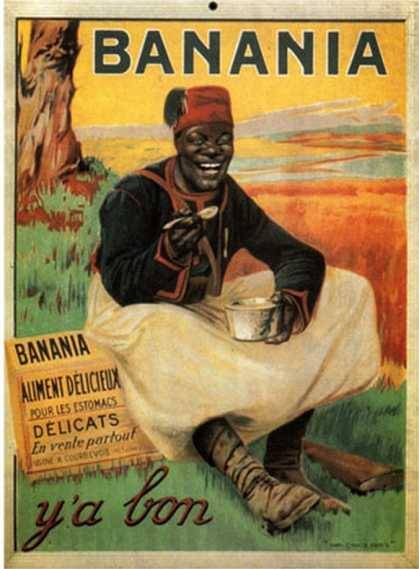
Label of cocoa "Banania" with the image of the Senegalese tyrael, 1915
But to the seemingly much more familiar and familiar natives of the Maghreb, the indigenous French at the time, oddly enough, were worse off.
In the course of hostilities, the Senegalese tyraller units suffered heavy losses from diseases caused by an unusual climate, especially in the autumn-winter period. So, the Cournot camp, created on the Atlantic coast in the vicinity of Arcachon to train arriving Africans, was closed after about 1000 recruits died in it - and the conditions in it were much better than at the forefront.
Near Verdun, the Moroccan Infantry Regiment (which was awarded the Order of the Legion of Honor) and two regiments of African tyiraliers: Senegalese and Somali became famous. It was thanks to them that they managed to recapture Fort Duamon.
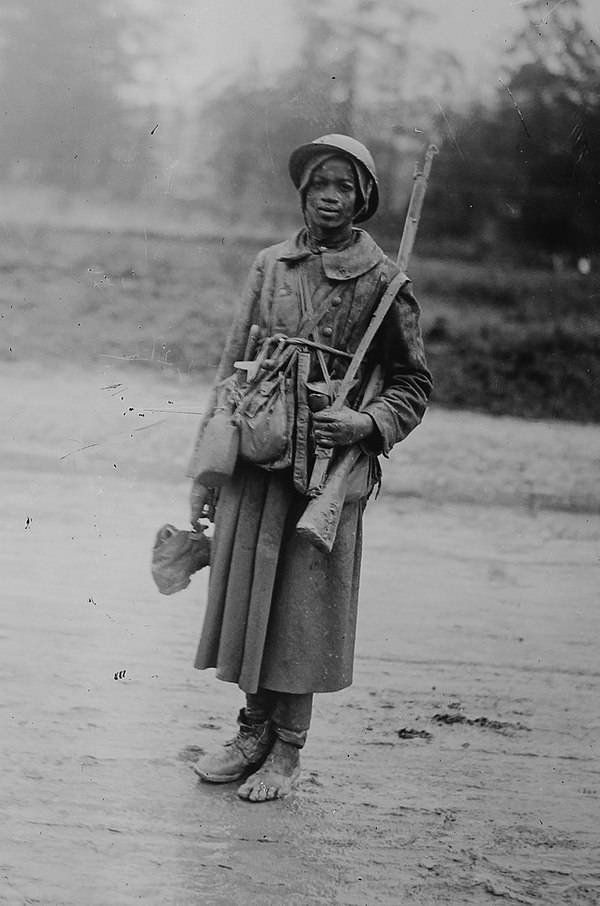
Senegalese tyraller near Verdun, October 24, 1916
The Senegalese tyrallers suffered enormous losses during the so-called “Nivelles offensive” (April-May 1917): out of the 10 thousand Africans participating in it, 6 were killed, and their head General Mangen even received the nickname “the black butcher”.
During the Second Battle of the Marne (June-August 1918), 9 battalions of Senegalese riflemen defended the "martyr city" (ville martyr) of Reims and were able to keep Fort Pompel. Here's how they wrote about these tragic events in Germany:
(Communication from the Wolf Agency of June 5, 1918.)
And the French deputy Olivier de Llons de Féchin said in December 1924:
On July 13, 1924, a monument to the heroes of the Black Army was unveiled in Reims.
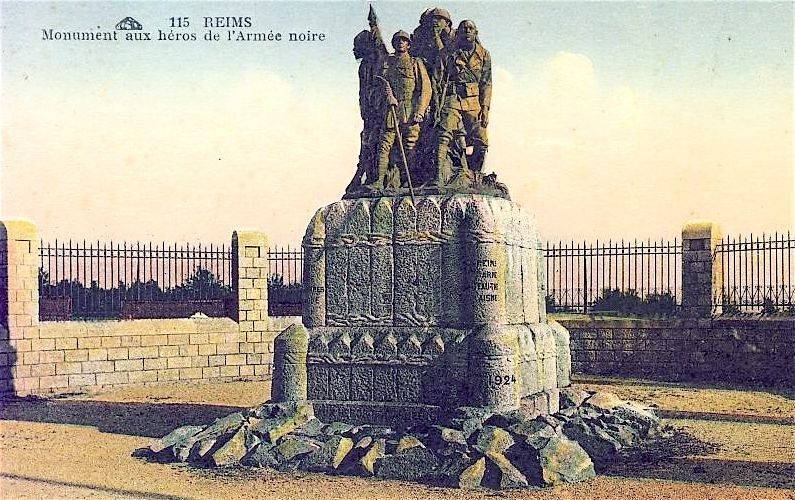
Reims Monument to the heroes of the "Black Army" - Senegalese riflemen who defended the city during the First World War. The inscription on the cap reads: “La France et la Ville de Reims. Aux soldats africains tombés pour la défense de la Liberté. 1914-1918 "(" France and the city of Reims. African soldiers who fell, defending Freedom ")
The same monument was erected in the city of Bamako - the capital of French Sudan. On his pedestal it was written: "En témoignage de la reconnaissance envers les enfants d'adoption de la France, morts au combat pour la liberté et la civilization" ("Certificate of gratitude to the adopted children of France who fell in the battle for freedom and civilization" )
The monument in Reims in September 1940 was destroyed by the Germans occupying the city, but was restored and reopened on November 8, 2013:
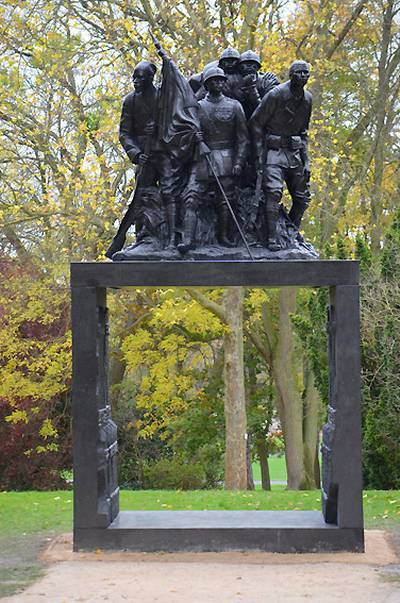
Reims The restored monument to the heroes of the "Black Army"
Despite the heroism, only 4 "Senegalese shooters" during the First World War were able to rise to the rank of lieutenant.
After the Compiegne Armistice was concluded, West African battalions of Senegalese tyrael entered the Rhine region as part of the 10th French Army.
In November 2006, on the occasion of the 90th anniversary of the battle of Verdun, the French parliament passed a law on the re-revaluation (revaluation) of the pensions of former soldiers of the colonies of World War I. But it soon became clear that the last of the Senegalese shooters, Abdule Ndie, died 5 days before the publication of this "fateful act." So nobody was able to take advantage of this belated generosity of the French parliamentarians.
As we recall from the previous article, the Senegalese arrows along with the Zouaves in December 1918 appeared in Odessa as interventionists.
They took an active part in the Reef War in Morocco (which was briefly described in the article “Zouaves. New and unusual military units of France ") After its completion, the "Senegalese tyiraliers" were constantly located not only at the place of their formation, but also in the French Maghreb, and even France.
Senegalese tyrael during World War II
Unions of the "black" Africa had a chance to participate in the fleeting military campaign of 1940. By April 1, 179 thousand Senegalese shooters had managed to mobilize the French army.
In the Catholic magazine Côte d´Ivoire Chretienne, published in the Ivory Coast colony after the outbreak of World War II, the following appeal appeared:
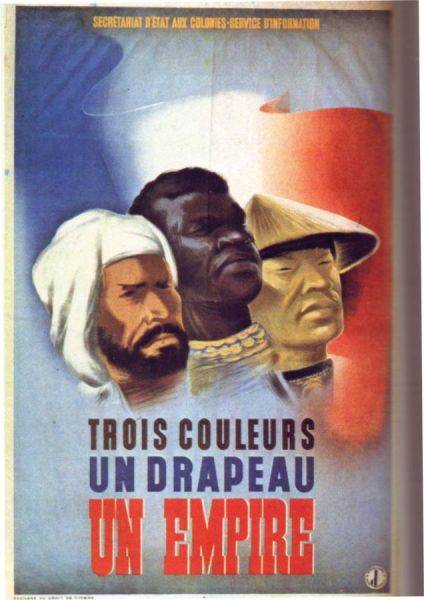
French poster of 1941: “Three colors, one flag, one empire”
But practiced and "traditional" methods.
The tiraler Sama Kone, a native of the same Ivory Coast, testifies:
Theodor Ateba Jene in the book “Memoirs of a Colony Resident” reports that in one of the Sunday services in the capital of Cameroon, Yaounde, soldiers suddenly appeared in the cathedral, who took the believers by truck to Camp Ge'nin, where they were divided into the following groups: men, fit for military service, men fit for work in the labor army, women and the elderly, aimed at auxiliary work in careers, children who were forced to work at the toilets in the soldiers' barracks.
The same author reports one of the raids on recruits:
French historian Nancy Lawler states:
Losses of Senegalese shooters during the 1940 campaign, according to various authors, ranged from 10 to 20 thousand people. As expected, the attitude of the Germans towards captured French and Africans was diametrically opposite. Nancy Lawler, already quoted by us, for example, talks about this case:
Gaspard Scandariato, an officer (according to other sources, corporal) of the French army, recalled another execution of the "Senegalese" on June 20, 1940:
Subsequently, the captured French were often entrusted with the protection and supervision of the "natives" sent to forced labor from the French colonies.
In 1944, both the Maghreb and Senegalese tyrael took part in Operation Dragoon, the landing of the Allied forces between Toulon and Cannes on August 15, 1944. This day is still a public holiday in Senegal.
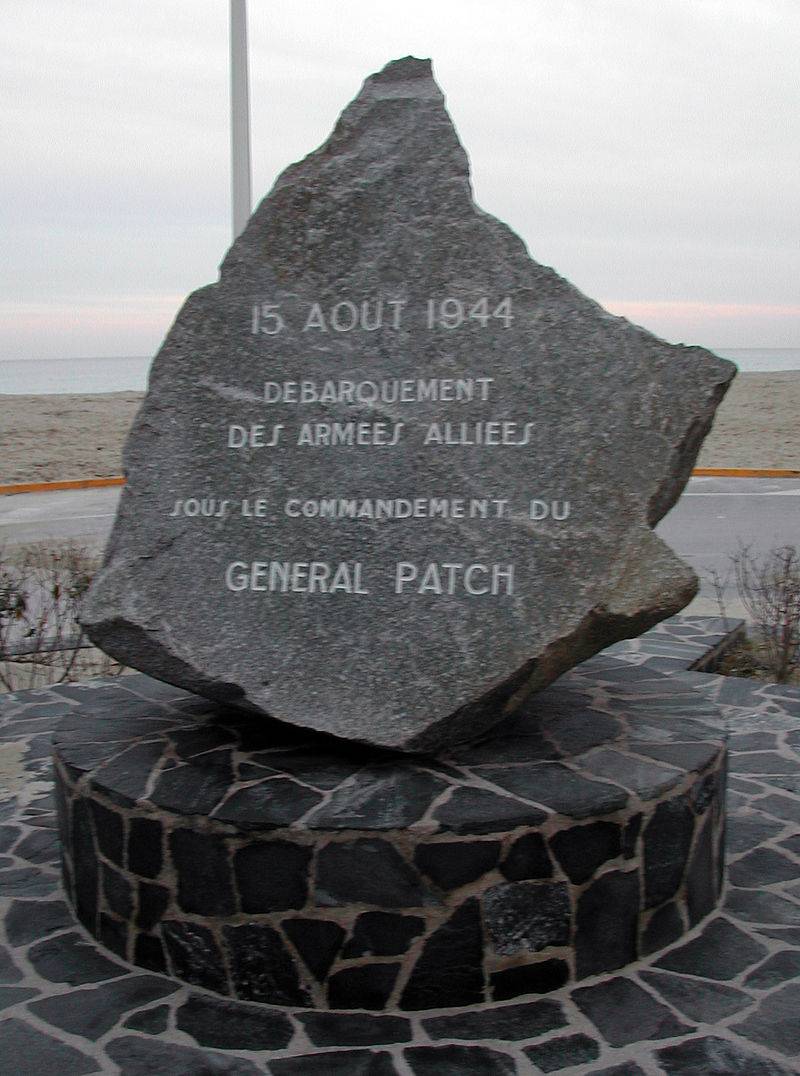
Monument on the coast, at the landing site of the Allies. Saint-Tropez, France
Among the Senegalese tyrallers of those years was Leopold Cedar Senghor, who had served in the French army since 1939. This is an African poet, a supporter of the theory of “negro” (proclaiming the uniqueness and self-sufficiency of the African “black” culture) and the future president of Senegal.
Three Prime Ministers of Upper Volta (Burkina Faso) also served in the formations of Senegalese riflemen: Sangule Lamizana, Saye Zerbo, Joseph Issoufu Konombo, and the dictator of Togo Gnassingbe Eyadema.
Another famous “black tyrael” is the “emperor” of Central Africa, Jean Bedel Bokassa, who was a member of Operation Dragoons and the fighting on the Rhine, and then, after graduating from the Senegalese officer school of Saint Louis, took part in the war in Indochina, earning the Lorraine Cross and Legion of Honor.
After the end of World War II, the French army had 9 regiments of Senegalese tyrael, which were stationed in West Africa. They also took part in hostilities in Algeria, Madagascar and Indochina.
Annamskie and Tonkin tyiraliers
Since 1879, the units of tyiraliers also appeared in Indochina: the first of them were recruited in the south of Vietnam - in Kokhinhin and Annam (Annamskie arrows).
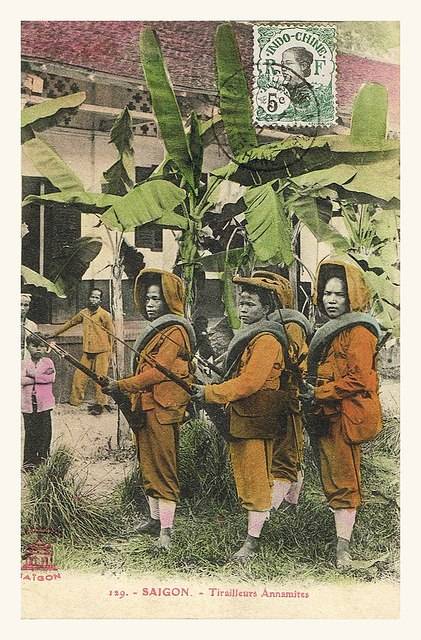
Annam (Saigon) arrows
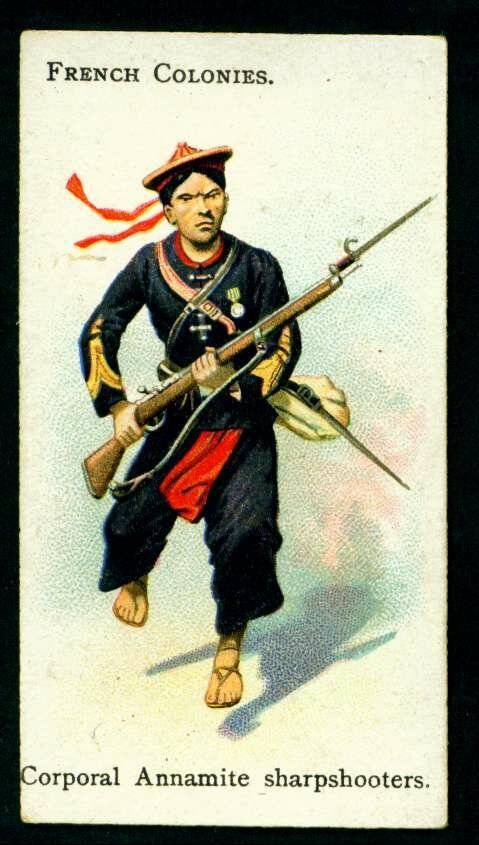
Annam shooter, cigarette card, 1895
In 1884, regiments from the natives of North Vietnam - Tonkin (Tonkin) were recruited. In total, 4 regiments of 3 thousand people each were created. Later, the number of regiments was brought to 6. It is interesting that before the start of World War I they did not have a military uniform - they used national uniform clothing.
Only in 1916 were they dressed in the form of French colonial units. And the traditional Vietnamese bamboo hat with a cork helmet was replaced only in 1931.
In 1885, during the Franco-Chinese War, the detachment of General de Negrie, in which there were two linear battalions, a battalion of the marine corps, a battalion of Algerian tyiraliers and two companies of Tonkin riflemen (about 2 thousand people) defeated 12 at a battle near Nui Bop -thousand enemy army. One of the Tonkin battalions fought at Verdun. But much more often the natives of Indochina were then used for auxiliary work, because their fighting reputation was then low. Then, the Tonkin shooters were in service in Syria and participated in the Reef War in Morocco.
During the years of World War II, 50 natives of Indochina were drafted into the French army. Indian trading posts (of which there were 000) and Pacific colonies each set up a battalion. The soldiers from Indochina were, for example, part of the troops defending the Maginot Line. In 5-1940 they also fought on the border with Thailand, which at the first stage of the war acted as an ally of Japan.
In 1945, all units of the Tonkin and Annam shooters were disbanded, their soldiers and sergeants continued to serve in ordinary French regiments.
As you probably guessed, both the "Senegalese" tyrallers and the units of the Indochina shooters were disbanded after gaining independence by the countries where they were formed.
The next article will talk about the combat formations of spag and hummers.
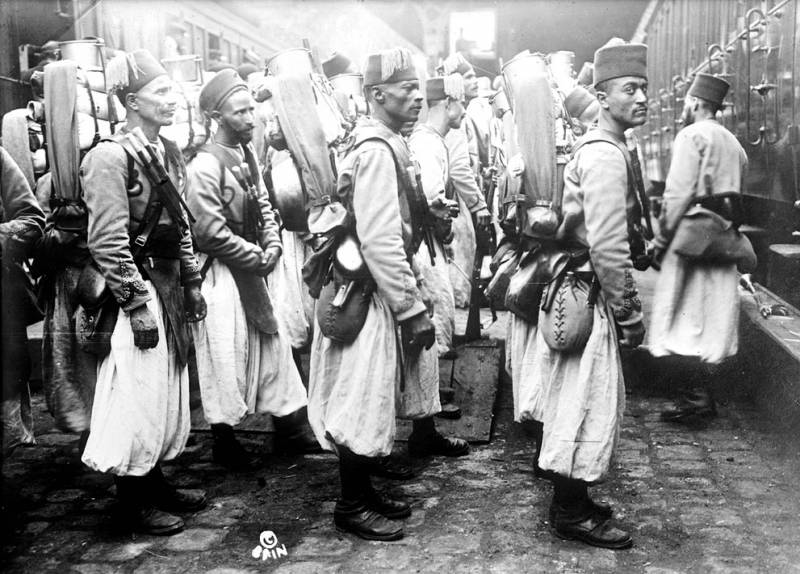
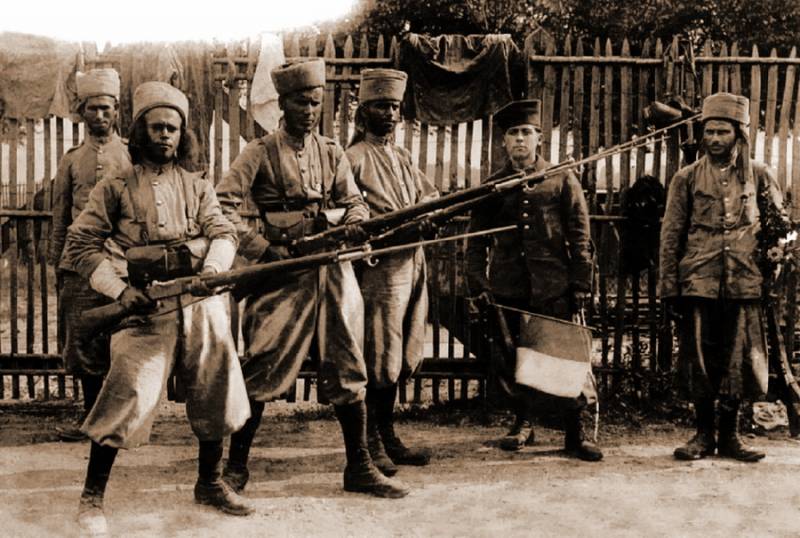
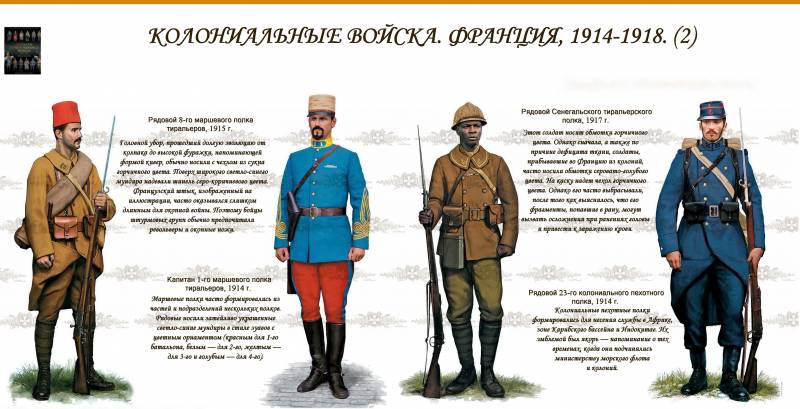
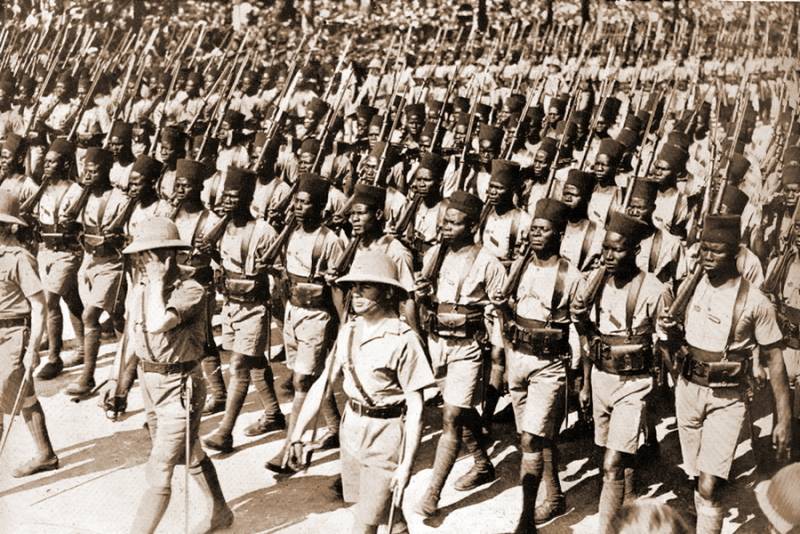
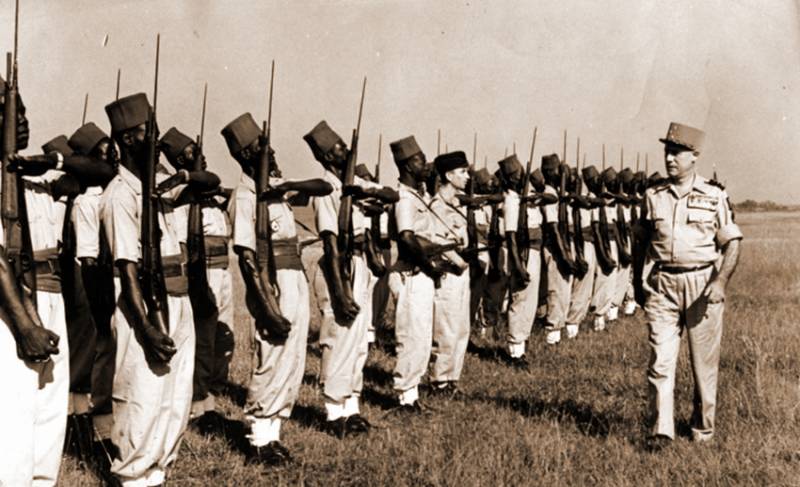
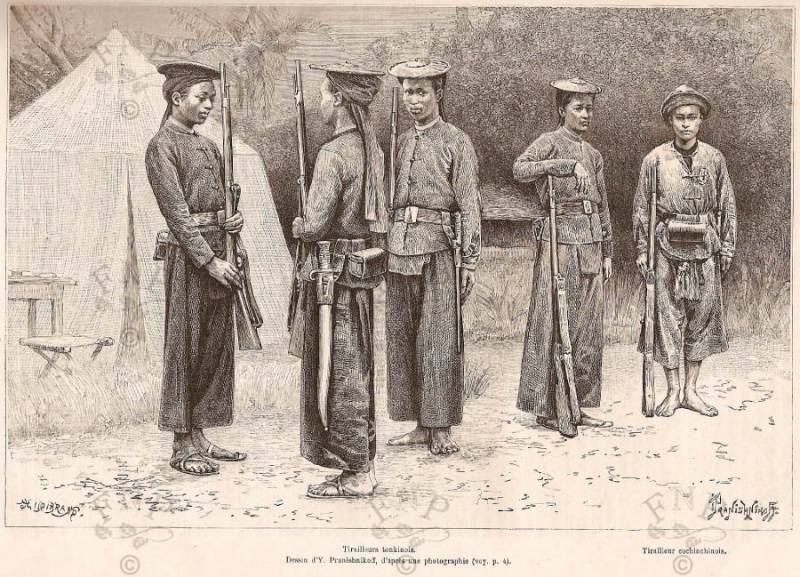
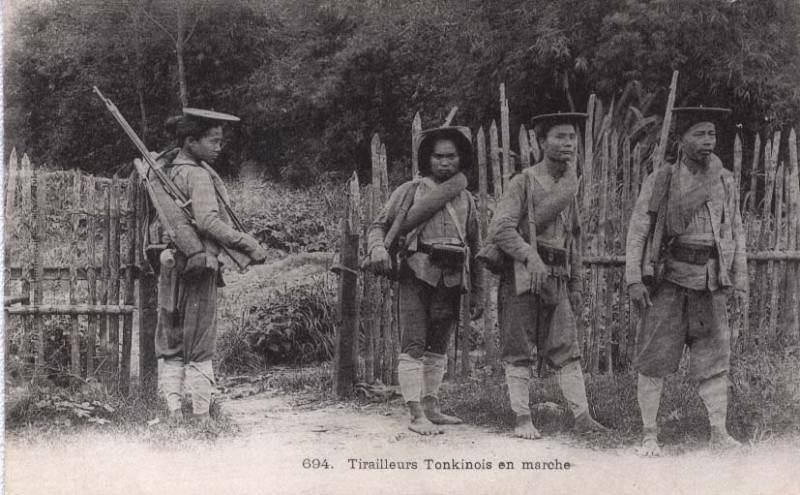
Information